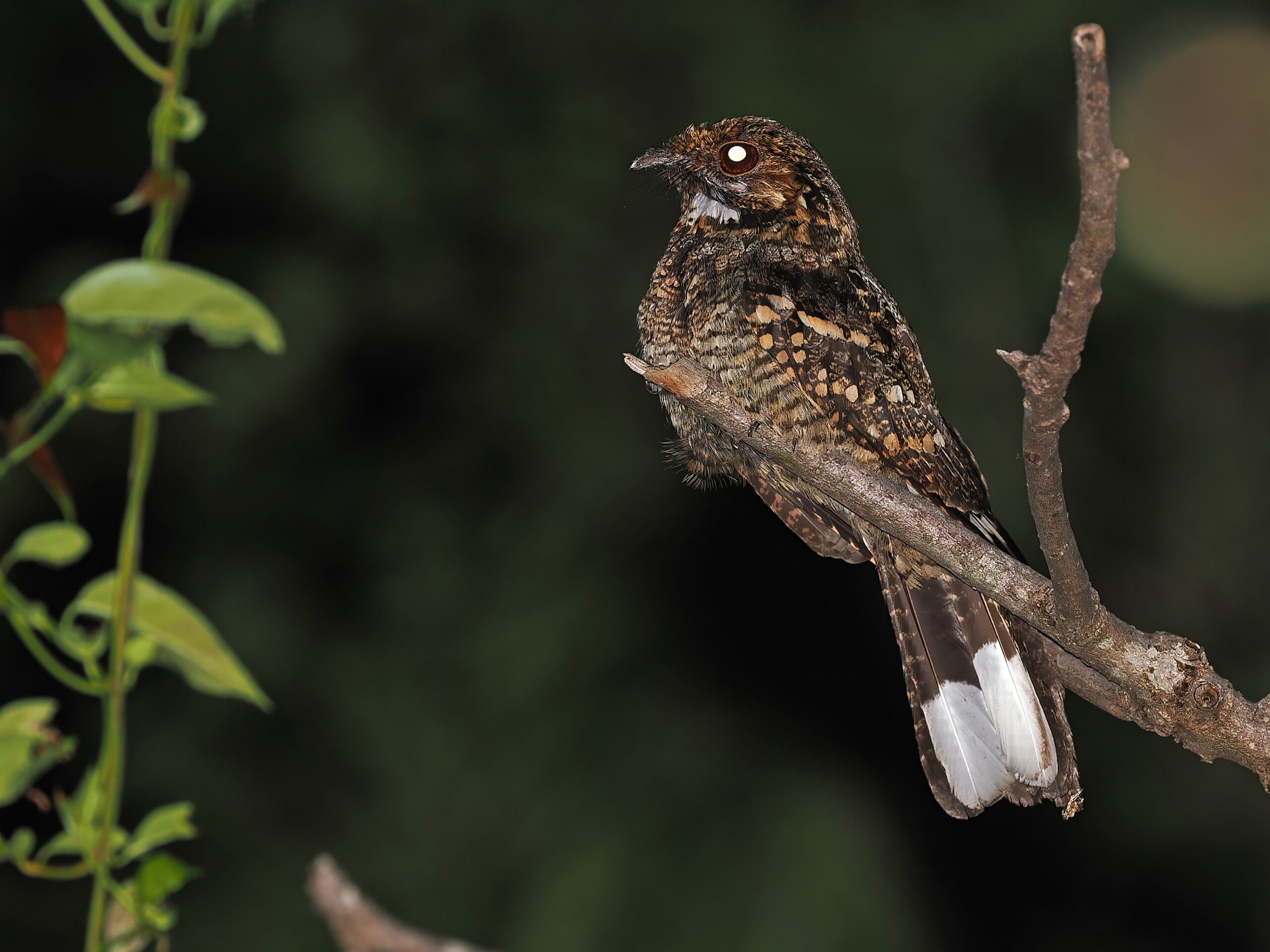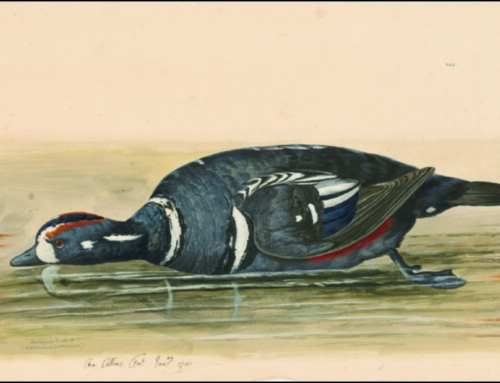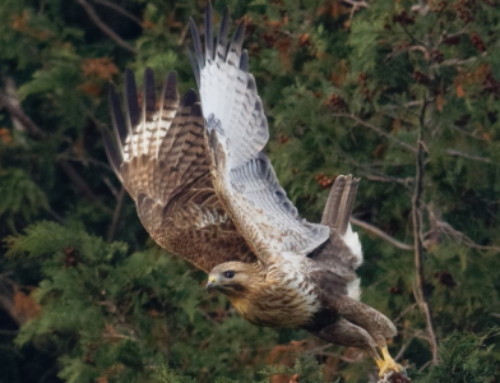LINKED PAPER  A new species of nightjar (Caprimulgus) from Timor and Wetar, Lesser Sunda Islands, Wallacea. King, B.F., Sangster, G., Trainor, C.R., Irestedt, M., Prawiradilaga, D.M., Ericson, P.G.P. 2024. IBIS. DOI: 10.1111/ibi.13340. VIEW
A new species of nightjar (Caprimulgus) from Timor and Wetar, Lesser Sunda Islands, Wallacea. King, B.F., Sangster, G., Trainor, C.R., Irestedt, M., Prawiradilaga, D.M., Ericson, P.G.P. 2024. IBIS. DOI: 10.1111/ibi.13340. VIEW
There are currently around 11,032 formally recognised bird species in the world and we recently described one more: the Timor Nightjar Caprimulgus ritae – of the islands of Timor and Wetar, in the nations of Indonesia and Timor-Leste.
Understanding whether a nightjar is a distinctive species is problematic because they 1) have cryptic plumage – meaning that they tend to look similar; and, 2) they are nocturnal and require specific effort to study them. Although two types of nightjar have been known from Timor island for more than 100 years the status of one of them was unclear because of the paucity of museum specimens available for genetic testing and morphological comparisons and because there was a lack of sound recordings.
As early as 1987, veteran ornithologist Ben King had recognised that the ‘large-tailed’ nightjar on Timor had a distinctive call and differed from other populations of that species. In 2005, after the publication of Mees’s Nightjar Caprimulgus meesi, a closely related new species of nightjar on Flores and Sumba, Indonesia, he initiated a collaboration with Dr George Sangster to work on this problem. Our scientific paper is the result of this investigation and uses multiple lines of evidence to argue the case for the distinctiveness of the Timor Nightjar through a series of comparisons (molecular, acoustic and morphological) to other nightjar species in neighbouring Australia and Asia.
Molecular samples from a specimen from Timor and one from Wetar clustered together in analyses, were closest to and yet distinctive from Mees’s Nightjar, and were even more different from numerous samples of Large-tailed Nightjar Caprimulgus macrurus from Australia, Asia and New Guinea, as well as other species in the region.
Analysis of a total of 25 nightjar sound recordings from Timor and Wetar showed that these were different from those of all other closely related species. The songs were shorter, often in bouts of 5-16 notes with 1-2.5 second pause unlike the songs of accepted nightjar species
Careful comparisons of museum specimens in the natural history museums in Leiden, the Netherlands, and New York, USA, revealed subtle but consistent differences between the nightjar species on Timor and Wetar, and the closely related Mees’s Nightjar and Large-tailed Nightjar.
The molecular and morphological analyses were mainly lab-based and dependent on specimens but how did we access the sound recordings? Until the 1990s and early 2000s ornithological visits were largely restricted to occasional visitors to the Indonesian (western) part of Timor island; there had been no ornithological visits to Timor-Leste (the eastern part of the island and a different country) since 1974; or to Wetar island – to the north of Timor – in about 80 years.

Figure 1. The environmental consulting survey team after walking around the karstic Paitchau range in Timor-Leste; recording Timor Nightjar in the remotest forest on Timor island.
The acoustic analysis required a set of independent sound recordings of nightjars at different sites, supported by observations confirming the source of those calls. Our article documents a total of 29 sites with records of Timor Nightjar, of which many were visited by Ben King and me. I spent about 6 months surveying birds in Timor-Leste during 2003-2006 camping at about 20 sites with nightjar records at many of these. Favourite memories of nightjars during this fieldwork include hearing 3-5 birds explode into sound at the edge of forest camps as above Muapitine village; and of walking 25 km through forest around the Paitchau range with an cheerful group of 15 (loaded up with harp and Elliot traps) recording Timor Nightjar at a forest camp 6 km from the nearest road.
Wetar island shares many bird species with Timor, but the rugged, sparsely populated island has historically been difficult to access. In 2008, both Ben King and I simultaneously made the first modern-day visits to Wetar island sound recording nightjars in the east and centre of the island.
Together with a team of ecologists from the former Indonesian Institute of Sciences I surveyed widely spaced sites and habitats by walking about 200 km in total to the central mountains about Lake Tihu at 500 m elevation, Naumatang Gorge to 730 m and in 2010 to a mountain called Ili Moso at just over 1000 m in elevation. Nightjars were frequently heard and sound recorded at camps at these three main sites, but my prominent memory is of the incredible pristine mountainous landscapes (Photos) and exhaustion from hiking in such difficult terrain.

Figure 2. Left: At the edge of Lake Tihu (Wetar island, Indonesia) calling Timor Nightjars were sound recorded each night. Right: Steep, old volcanic mountain landscapes along the Naumatang Gorge (Wetar island, Indonesia) with Eucalyptus woodland on ridges and tropical forest in gullies and mountaintops; Timor Nightjar was frequently heard at night in this landscape.
Most of our field efforts were in the 2000s but since then there has been stunning growth in citizen science datasets following visits by bird tours and individuals, especially after around 2017. Additional sound recordings, photos and videos, of Timor Nightjar uploaded to Ebird and Cornell’s Macauley Library continue to add to our understanding of this nightjars distribution and ecology. Our acoustic analysis mostly relied on our own recordings, but we are grateful for access to recordings held by citizen science databases such as Ebird, Cornell Lab of Ornithology, by the Avian Vocalisations Centre and Xeno-Canto. Indonesia and Timor-Leste lack national, online, publicly accessible wildlife databases so these databases and the workers that contribute to them are becoming increasing vital for taxonomic and species conservation assessments.
Image credit
Top right: One of the first photographs of the Timor Nightjar taken on Wetar island, 13 October 2014 © Mark Eaton.





